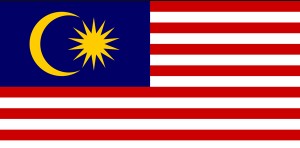
BIX ARTICLE
The State of Islamic Sustainable Finance in Malaysia and Indonesia, According to The Legal Community
Jan 03, 2023
|
14 min read
Featured Posts
Social Bonds Illustrative Use-Of-Proceeds Case Studies Coronavirus
Jul 06, 2020
|
2 min read
Sustainable Banking Network (SBN) Creating Green Bond Markets
Jul 06, 2020
|
2 min read
Why is Inflation Making a Big Comeback After Being Absent for Decades in the U.S.?
Mar 24, 2022
|
7 min read
SC issues Corporate Governance Strategic Priorities 2021-2023
Mar 29, 2022
|
3 min read
Malaysia and Indonesia stand as the two largest issuers of Sukuk in Southeast Asia as well as the second- and third-largest in the world respectively, behind Saudi Arabia. Both countries have situated themselves as leaders in the recent shift toward sustainability in Islamic finance. Regulations and standardization, or the lack thereof, are often cited as barriers to the growth of Islamic sustainable finance. To understand the landscape, we engaged a select group of Islamic finance lawyers from leading law firms in Malaysia and Indonesia on regulatory and legislative issues.

Demand for Islamic sustainable finance growing significantly
Interest in and demand for Shariah compliant sustainable financial services are steadily growing as evident by increasing queries from clients, particularly over the last two years as more clients are keen to tap the growing pool of liquidity held by investors that are placing a greater emphasis on sustainability when making investment decisions.
“Of late, we have noticed more demand for Islamic sustainable financing, in particular, sustainability Sukuk issuances in the Malaysian debt capital market space. Issuers/borrowers are more inclined to explore such issuances with the increasing focus on sustainability initiatives and to support their commitment towards sustainable operations in their businesses,” remarked Gan Kok Ling, a partner at Adnan Sundra & Low.
Azlin Ahmad, a partner at Herbert Smith Freehills, believes that: “The demand within the Islamic finance space will be proportionate to, if not more enthusiastic than, the demand in the conventional financing space.”
Fitch Ratings projects the growth of ESG Sukuk to grow 2.6% to 5% of global outstanding Sukuk over the next five years and up to 15% in the medium term.
However, clients may not be ready to fully embrace the new asset class due to perceived high barriers to entry such as stringent reporting requirements and compliance cost.
“Despite the fact there is significant overlap between Islamic finance and sustainable finance principles, the figures show that Islamic finance participants are lagging behind their conventional counterparts when it comes to sustainable financing,” shared Elias Moubarak, a partner at Trowers & Hamlins. “We have been advising in relation to structuring and documenting Shariah compliant sustainable financing products, particularly Sukuk, but to date, not many of those have come to market.”

The first green bond was issued in 2007 by the European Investment Bank, which set off a chain reaction of ESG financing that has bloomed into a market worth over a trillion dollars, while the first-ever green Sukuk offering only debuted a full decade later in 2017.
Aside from the late start, the growth of ESG Sukuk relative to conventional ESG bonds has also been handicapped due to the extra complexities and costs associated with Shariah compliance.
“Based on my experience, clients are not really ready to strictly comply with the covenants and requirements expected of them when they obtain sustainable finance. There are lots of reporting obligations, obligation to appoint independent consultants to verify and report from time to time and, overall, extra costs to be incurred, sometimes in modifying the project to ensure compliance with the ESG guidelines, eg level of carbon emissions,” observed one partner at a leading Malaysia-based legal firm who requested anonymity.
There is significant overlap between the principles of Islamic finance and sustainable finance, thus giving Islamic finance practitioners the opportunity to demonstrate success and grow the market. Clients still need to be educated on both Islamic and sustainable finance instruments, including understanding the true cost and benefits of adopting such products.

Clear regulations crucial to success but extent of standardization up for debate
Legal practitioners interviewed were unanimous on the urgent need to develop clear, practical and transparent guidelines that would help investors understand what is required from an SDG viewpoint and how they can transition to sustainable finance.
“Existing guidelines tend to be deliberately vague on enforcement and adverse consequences, not least as most of the attention in a sustainable financing transaction is focused at the entry level rather [than] throughout the lifespan of the financing facility itself,” noted Azlin.
However, the extent that such guidelines be standardized across regional or international lines is up for debate. Azlin stipulated that guidelines should be “adaptable to the ecosystem which fulfills domestic needs in a manner that allows effective and realistic enforcement … ASEAN should not be seen as a collective individual but rather a group of smaller components working together given the variant states of development in this field.”
Jal Othman, a partner at Shook Lin & Bok, concurred that regulations must be kept relevant to context as: “Sustainability is a relative concept. Issuers must be measured against the industry and business environment that they are operating in.”
Yet greater regional standardization would “allow for a wider and deeper sustainable financing ecosystem”, noted Elias.
There are elements of both regional standardization and variation in the current format. Green Sukuk issued in Malaysia and Indonesia are responsible to the ASEAN Green Bond Standards launched in 2020 and both countries also have their respective frameworks.

However, regulators “should keep in mind that green bonds/Sukuk are tradeable” and thus “to be palatable to foreign investors … standards should be consistent with [the] international level”, noted our anonymous Malaysia-based lawyer.
These concerns are already evident in the discrepancies in practice between local and international banks in Malaysia and Indonesia as local banks have yet to modify their financing documentation to include extensive ESG covenants. International or global banks — which are signatories to the Equator Principles — on the other hand will not grant the financing unless the clients have agreed to include in their financing documents and to comply with ESG requirements.
While regional variation may be necessary in the short term, there will continue to be pushes and pulls toward the international line. Regulators should be aware of this tension and continue to update guidelines and regulations and respond to developments in markets and international legislative practices.
In 2021, Securities and Exchange Commission Malaysia announced that its framework had been revised in order to better align with international standards.
Call to action:
- Develop clear and transparent guidelines that are appropriate and flexible enough to be properly adopted in the relevant jurisdiction.
- Ensure guidelines are responsive to international developments to ease and ensure trade.

Flexible taxonomies and provision of incentives will help encourage SDG compliance
Taxonomies
The debate over standardization equally applies to the development of taxonomies and labels that will help classify good practice and push companies and investors toward sustainable financing.

Version 1 of the ASEAN Taxonomy for Sustainable Finance was issued last November with labels grading from green to red with an intermediary ‘amber’ label allowing for companies in a polluting-industry to transition to environmental responsibility around the principle of ‘Do No Significant Harm’ (DNSH):
“An economic activity is generally location- and context-specific, and interacts directly or indirectly with the surrounding environment. While the economic activity may contribute towards environmental objectives, the economic activity may cause unintended harm to the broader environment.”
Azlin commended ASEAN for this ‘traffic light’ approach to compliance/non-compliance, with its ‘granular’ taxonomy, as opposed to the EU’s dichotomous grading where assets are either green or red. She points out that: “The EU Taxonomy Regulations (2020) do not include or recognize the importance of transition-enabling activities … Many industries, such as the oil and gas sectors, do not have the infrastructure to transition into a sustainable activity. Investing in transition-enabling activities allows for the research and production of infrastructure that will ensure sectors operate at net-zero emissions in the future.”
This ‘granular’ taxonomy is reflected in the Indonesian Financial Services Authority’s ‘Green Taxonomy Edition 1.0’ launched earlier this year which includes an ‘amber’ transitional label. Mirza Karim, a partner at KarimSyah, noted that the strategic objective of the document is “to encourage innovation in developing green products/projects/initiatives”.
Three lawyers based in Jakarta concurred that taxonomies should account for “‘assets in transition’ to enable them to shift from ‘brown’ to ‘green’, and that such grading should be relevant to Indonesia.”
As emerging markets, regulators in Malaysia and Indonesia must find ways of encouraging growth while insisting on SDG principles and enforcing compliance.

However, again there is the issue that with regional variation there may also be a restricted market and greater difficulty in collaborating with international financial bodies.
Echoing the comments of our anonymous Malaysia-based lawyer in the previous section, Elias opined that: “Taxonomies should be in line with those in the conventional finance space in order to allow for the greatest possible demand for Shariah compliant products.”
Regional variation in taxonomy may confuse and/or disrupt transnational business, as what is ‘amber’ in one region may be ‘red’ in another, making it difficult to track SDG compliance past the national level or regional level.
“Having transparent environmental targets can assist the Green Taxonomy users to assess whether the environmental performance of an activity is consistent with the environmental objectives. This requires a common measurement metric that can provide an overview of environmental impacts,” noted several lawyers in Indonesia.
The ASEAN taxonomy states that: “In developing the criteria for DNSH going forward, ASEAN will take into consideration parallel activities elsewhere, including the EU.” Likewise, while transitional labels may be necessary instruments for progress towards SDG goals, regulators must not forget that the ultimate aim is to get all ‘amber’-labeled companies to ‘green’. Mirza noted that: “Among the 919 subsectors/groups/business activities mapped and clarified by Indonesian technical industries, 904 are not yet able to be directly categorized as a green sector.”
Incentives
SDG compliance places a financial burden on companies and financial bodies. As discussed above, one way of lowering costs is by implementing clear and transparent guidelines, which Gan of Adnan Sundra & Low claimed will “ensure that compliance [is] easily executed without excessive and onerous obligations on the part of the issuers/borrowers”.
Another way of reducing compliance cost is through the provision of incentives such as tax reductions and green grants.
“At this moment, it is not entirely clear if there is a real sufficient incentive for the borrower or issuer to do any ESG/green-related financing (for both conventional and Shariah) as there is no certain discount being provided to them,” noted Andrew and his colleagues in Jakarta.
Mirza concurred that in Indonesia “until now there is no specific regulation to push business actors to prioritize the issuance of green Sukuk”.
The Malaysian regulator, particularly Securities Commission Malaysia, has led by example. On the 23rd August, the commission announced an expansion of the SRI Sukuk and Bond Scheme grant which enabled eligible SRI-linked Sukuk issuers to offset up to 90% of external review costs from a maximum of RM77,000 (US$17,224.1) to a new maximum of RM300,000 (US$67,106.7). The scheme also provides a five-year income tax exemption for recipients of the grant.
Such grants allow green Sukuk issuers to offset the cost of the requirements for external review. The Malaysian framework also provides tax-incentives, as opposed to Indonesia, which contributed to the growth of corporate green Sukuk issuance in Malaysia.
Jal Othman noted that in Malaysia there is “an increasing buy in to the attractive concept that sustainable practices are rewarded by investors and financiers either in the form of cheaper cost of funds or flexible and favorable repayment terms including write-off of debts”.

Call to action
- Develop robust taxonomies for measuring, tracking and reporting the impacts of investments that are suitable for the ASEAN region.
- Ensure that taxonomies are updated and responsive to changing circumstances both regionally and internationally.
- Implement legislation that incentivizes sustainability-focused or linked initiatives and projects that can then be financed in a Shariah compliant manner.

Independent reporting systems necessary to encourage compliance and prevent greenwashing
While clearer guidelines, flexible taxonomies and provision of incentives would help encourage SDG compliance, they may also encourage greenwashing. To prevent this, all lawyers consulted agreed on the need for, in the words of Jal Othman, “independent and credible verification and validation”.
“To avoid the bad rep coming out of greenwashing [it is] critical to advance the Shariah Maqasid principles driving sustainability. Just as much as we are doing the same for non-Riba principles,” opined Jal.
Another Kuala Lumpur-based lawyer elaborated that: “In Malaysia, there is currently no hard enforcement … If a customer does not comply with ESG covenants under their financing documents, it does not trigger an event of default.”
To mitigate this, regulators should continue to monitor and update the development of a financial industry reporting system, according to Andrew Mohamed, Nadzar and Risnan.
Azlin added that: “Companies should report their sustainable initiatives alongside their other business activities to allow for an assessment of their sustainability as a whole, instead of having a company’s green reputation be inflated due to one sustainable project that may not have even impacted the company’s carbon emissions as a whole.” She pointed to the International Organization of Securities Commissions’s recommendations that “regulators should have supervisory tools to monitor and assess compliance with regulatory requirements and enforcement tools to address any breaches of such requirements”. She also alluded to the need for developing a consistent international standard of reporting.
However, the manner and method of enforcement comes with its own complications. As Elias stated: “Regulators must walk a fine line between implementing effective and robust standards (which should curb ‘greenwashing’) but on the other hand overly ridged disclosure frameworks that might risk undermining the development of green bonds and other sustainability-linked products.”
Mirza agreed that regulators should ensure that any standard and label is “dynamic/living” and “flexible in nature”.
“These measures will inevitably lead to increased costs. Thought has to be given as to how these costs are to be managed and the effect they would have on the pricing point,” commented Azlin.
As discussed above, grants and incentives will help offset the costs of switching to green and the costs of implementing transparent and independent review processes. Securities Commission Malaysia’s expansion of the Bond Scheme grant enabling eligible SRI-linked Sukuk issuers to offset up to 90% of external review costs to the new maximum of RM300,000 is welcome news. Lastly, these review bodies should be given power to enforce breaches as well as continually update the market on required practice based on changing international market and scientific conditions.
Call to action
- Implement mandatory detailed reporting on sustainability performance and targets.
- Develop independent reporting bodies that can continually update and instruct on guidelines and changing conditions.
- Implement legislation that penalizes greenwashing and incentivizes compliance with reporting bodies.
Written by: Louis Edmondes, Author & Research Lead at Islamic Sustainable Finance & Investment (REDmoney Group)
Source: Lack of standardization curbing Islamic sustainable finance growth in Malaysia and Indonesia, says legal community.Islamic Sustainable Finance & Investment. Retrieved from https://islamicsustainable.com/legal-survey-report/
Disclaimer
The information provided in this report is of a general nature and has been prepared for information purposes only. It is not intended to constitute research or as advice for any investor. The information in this report is not and should not be construed or considered as an offer, recommendation or solicitation for investments. Investors are advised to make their own independent evaluation of the information contained in this report, consider their own individual investment objectives, financial situation and particular needs and should seek appropriate personalised financial advice from a qualified professional to suit individual circumstances and risk profile.
The information contained in this report is prepared from data believed to be correct and reliable at the time of issuance of this report. While every effort is made to ensure the information is up-to-date and correct, Bond and Sukuk Information Platform Sdn Bhd (“the Company”) does not make any guarantee, representation or warranty, express or implied, as to the adequacy, accuracy, completeness, reliability or fairness of any such information contained in this report and accordingly, neither the Company nor any of its affiliates nor its related persons shall not be liable in any manner whatsoever for any consequences (including but not limited to any direct, indirect or consequential losses, loss of profits and damages) of any reliance thereon or usage thereof.
YOU MAY ALSO LIKE
ARTICLE
Sep 29, 2025
|
6 min read
ARTICLE
Aug 12, 2025
|
6 min read
ARTICLE
Jul 29, 2025
|
3 min read
ARTICLE
Jul 25, 2025
|
8 min read




